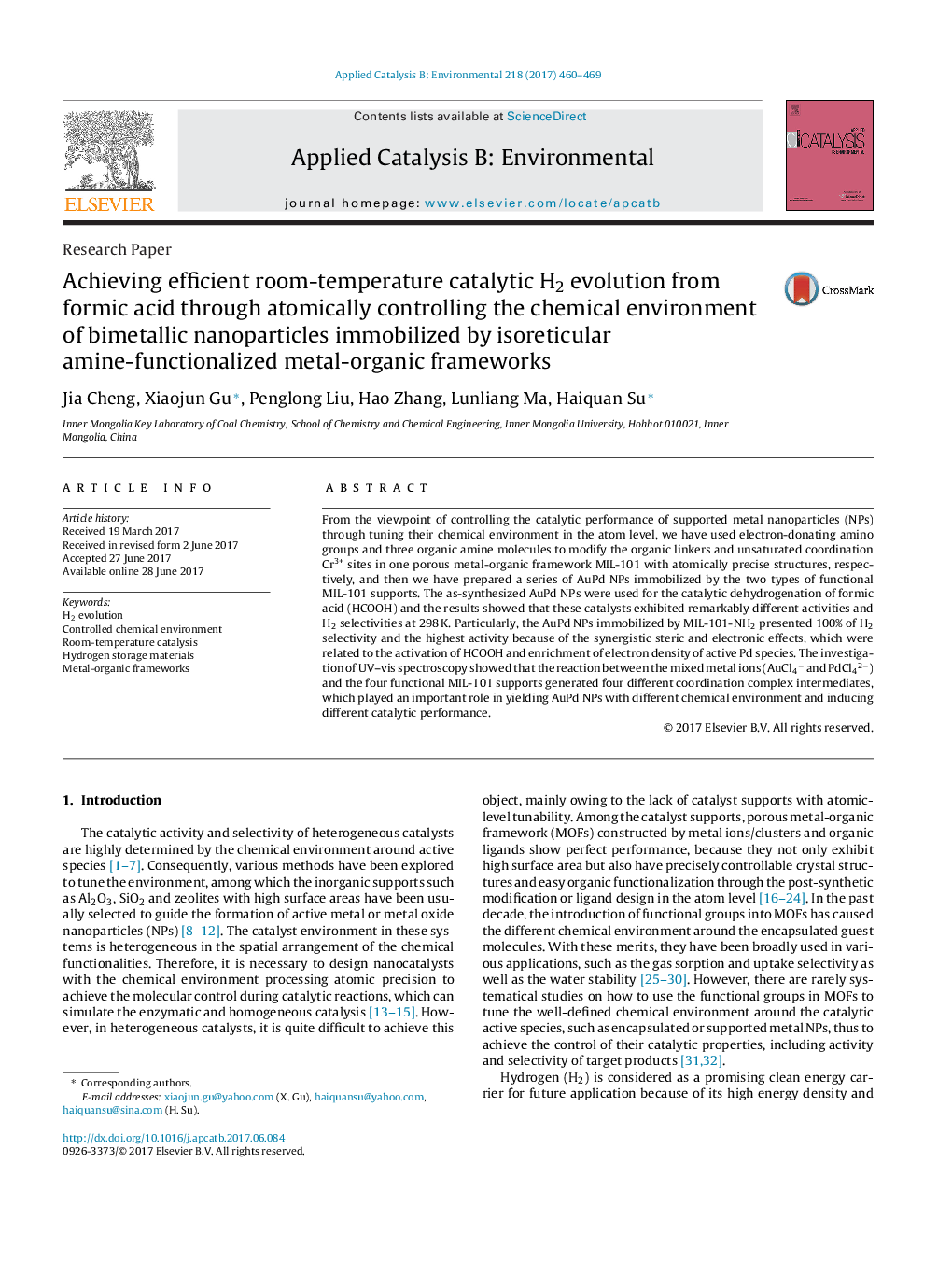| کد مقاله | کد نشریه | سال انتشار | مقاله انگلیسی | نسخه تمام متن |
|---|---|---|---|---|
| 6453776 | 1418802 | 2017 | 10 صفحه PDF | دانلود رایگان |

- AuPd nanoparticles (NPs) are immobilized by different functional MIL-101 species.
- AuPd catalysts exhibit the different performance on dehydrogenation of HCOOH.
- The different environment of AuPd NPs leads to the different catalytic behaviors.
- Different coordination intermediates induce the formation of different AuPd NPs.
- The obtained results may promote the application of HCOOH as a H2 carrier.
From the viewpoint of controlling the catalytic performance of supported metal nanoparticles (NPs) through tuning their chemical environment in the atom level, we have used electron-donating amino groups and three organic amine molecules to modify the organic linkers and unsaturated coordination Cr3+ sites in one porous metal-organic framework MIL-101 with atomically precise structures, respectively, and then we have prepared a series of AuPd NPs immobilized by the two types of functional MIL-101 supports. The as-synthesized AuPd NPs were used for the catalytic dehydrogenation of formic acid (HCOOH) and the results showed that these catalysts exhibited remarkably different activities and H2 selectivities at 298Â K. Particularly, the AuPd NPs immobilized by MIL-101-NH2 presented 100% of H2 selectivity and the highest activity because of the synergistic steric and electronic effects, which were related to the activation of HCOOH and enrichment of electron density of active Pd species. The investigation of UV-vis spectroscopy showed that the reaction between the mixed metal ions (AuCl4â and PdCl42â) and the four functional MIL-101 supports generated four different coordination complex intermediates, which played an important role in yielding AuPd NPs with different chemical environment and inducing different catalytic performance.
194
Journal: Applied Catalysis B: Environmental - Volume 218, 5 December 2017, Pages 460-469